Amsterdam is famous around the world for its UNESCO World Heritage listed canals and its beautiful, gabled canal houses. The city is also known for its varied architecture – look closely and you’ll spot a wide range of styles, from Gothic, Baroque and Renaissance to Art Nouveau, Expressionist and cutting-edge 21st century architecture. One architectural style that’s unique to the city is the Amsterdam School, which emerged in the early-20th century. A small group of architects, inspired by Expressionism, broke away from the staid architectural style that was prominent during this period and created a more flamboyant style.
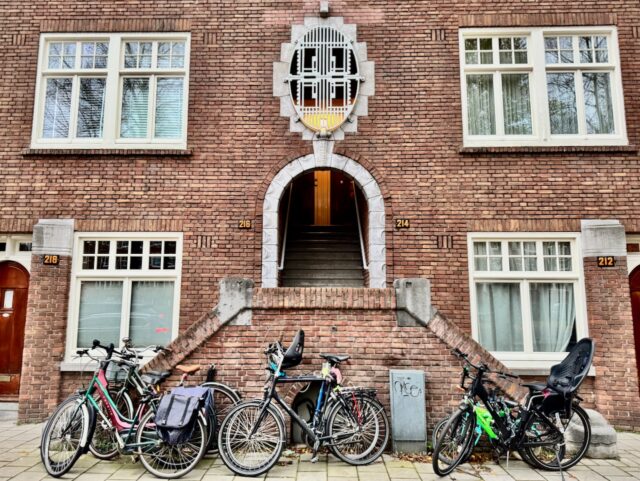
The Amsterdam School architectural style can be found throughout the city but it’s especially prevalent in the districts of Amsterdam Zuid (South) and Spaarndammerbuurt. It’s one of my favourite architectural styles and I’m always on the lookout for it during my walks around the city. Scroll down to see a suggested walking route in Amsterdam Zuid past numerous highlights of Amsterdam School architecture.
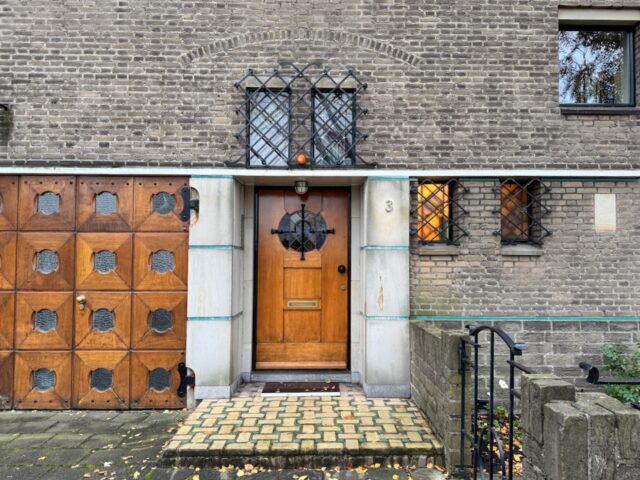
Origins of the Amsterdam School architectural style
The Amsterdam School wasn’t a ‘school’ per sé but rather a movement that emerged during a period of significant social change in The Netherlands. By the early 1900s, the Industrial Revolution had spurred urbanisation, leading to overcrowded, impoverished neighbourhoods in many cities. In Amsterdam, a wave of social housing projects began, motivated by the belief that architecture could contribute to a better society.
Hendrik Berlage – the founding father of Dutch Modernist architecture
Hendrik Berlage was an influential architect in the late-1800’s. Often credited for introducing Modernist architecture in The Netherlands, his most famous buildings include the Beurs van Berlage (Commodities Exchange) in Amsterdam.
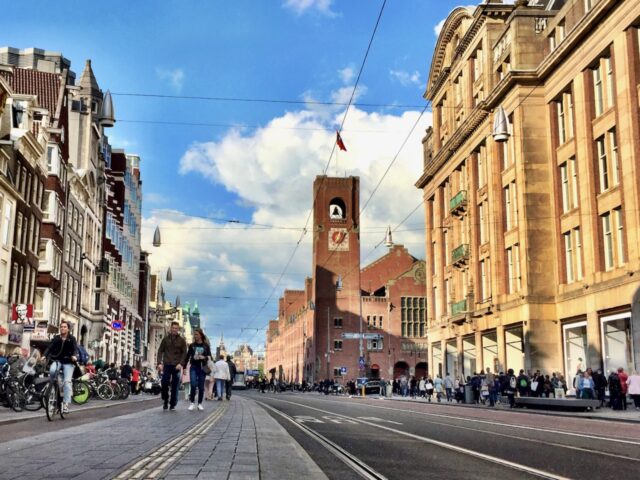
Plan Zuid
In the early-1900’s, Berlage was invited to submit plans for the rejuvenation and expansion of various districts in Amsterdam. One of his largest projects was Plan Zuid, a large development of Amsterdam’s southern districts which the city council approved in 1917.
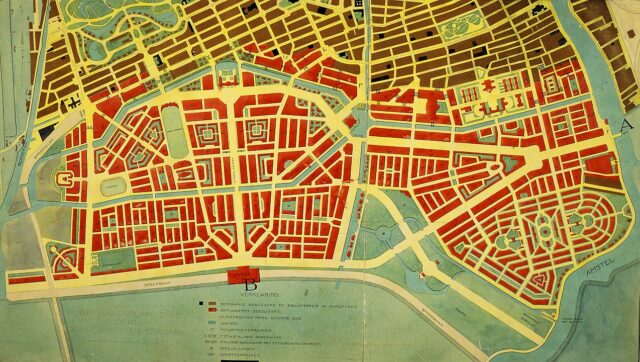
A team of architects, amongst whom, Michel de Klerk and Piet Kramer, was recruited to execute Berlage’s Plan Zuid. However, they didn’t share the same architectural vision as Berlage. Inspired by the artistic forms of Expressionism, these architects deviated from Berlage’s more ‘traditional’ Modernist style and designed buildings in a style that came to be known as the Amsterdam School.
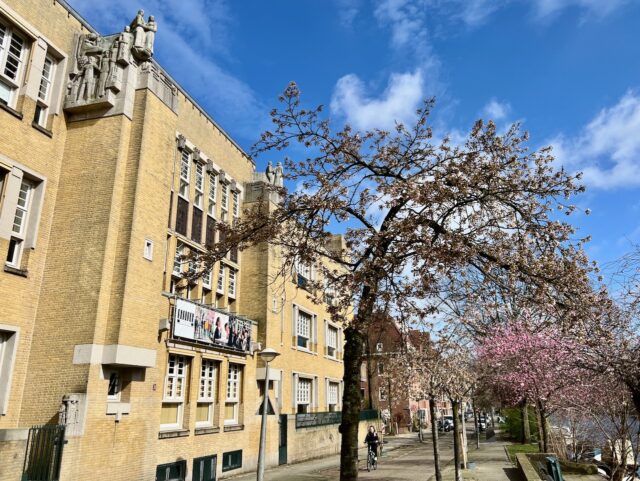
The Amsterdam School style was rooted in socialist ideals, with the belief that workers deserved well-designed, attractive housing that would promote community and dignity. Michel de Klerk embraced the concept of “aesthetic socialism” — the idea that beautiful architecture could inspire a better way of life for the working class.
Characteristics of the Amsterdam School style
Known for its expressive, ornamental, and often whimsical forms, the Amsterdam School style belongs to the broader (Brick) Expressionist movement but is highly distinctive in its own right. The style was used in the design of entire neighbourhoods but also bridges, bridge houses, public urinals, fonts, sculptures and furniture.
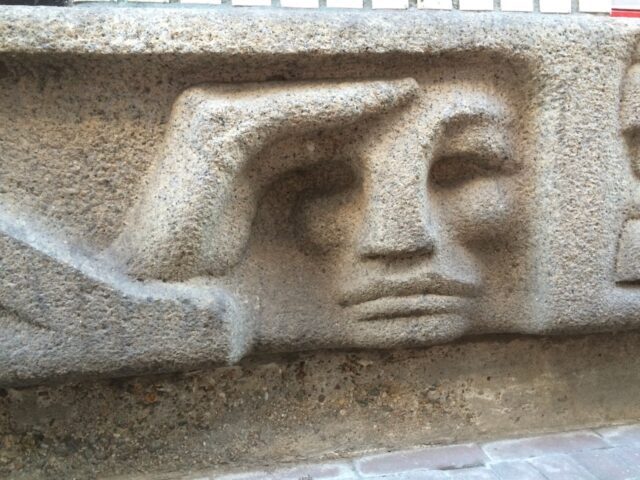
The architecture of the Amsterdam School is instantly recognisable due to its organic shapes, intricate brickwork and sculptural façades. This style not only reflects a unique design philosophy but also captures a moment of social and cultural transformation in Amsterdam in the early-20th century. The key characteristics of the Amsterdam School style include:
Ornamental brickwork
One of the hallmarks of Amsterdam School buildings is their intricate, decorative brick façades. Rather than following a flat, straightforward design, these facades often have unique shapes, patterns and textures. Look out for wavy façades made of brick, or names and text incorporated into the brickwork.
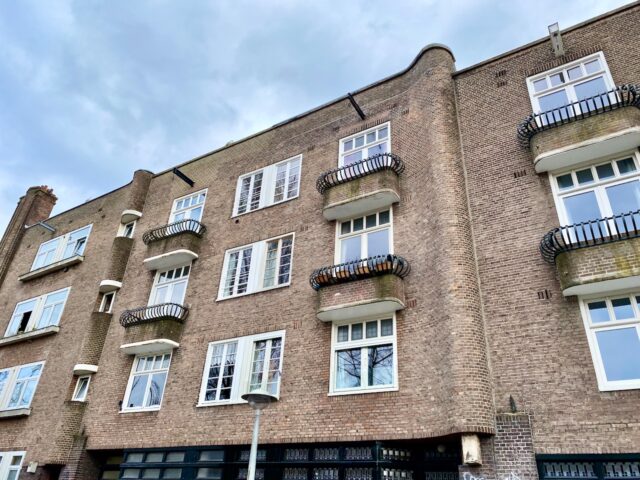
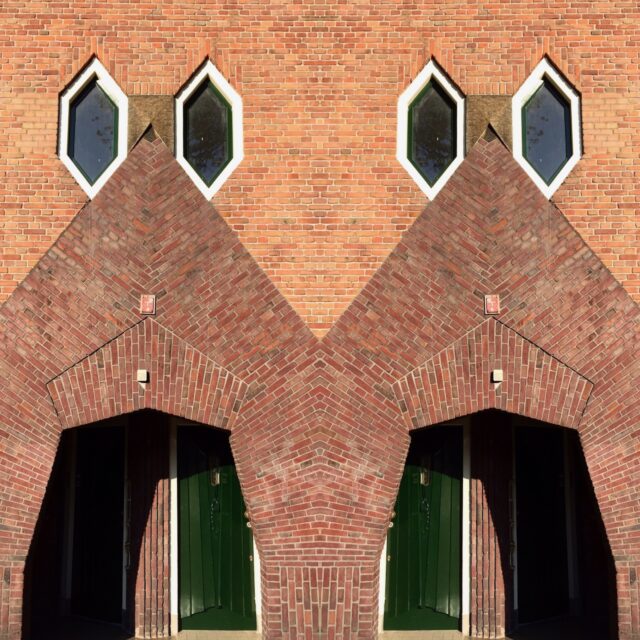
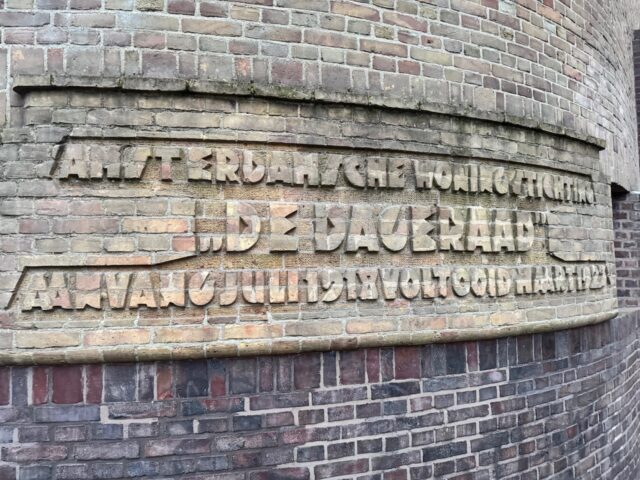
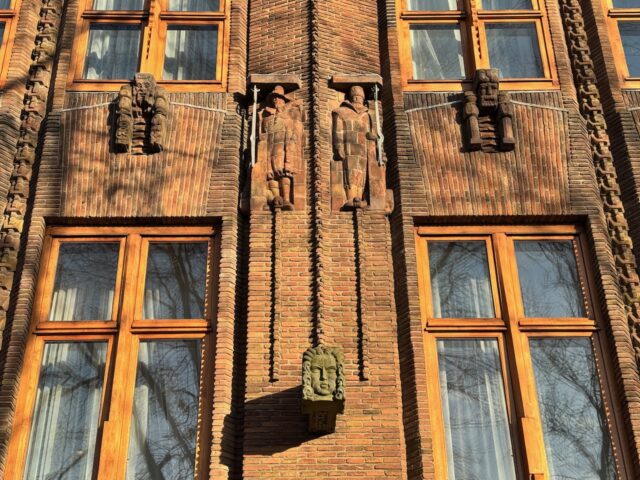
Expressive forms
One element I love about the Amsterdam School style is its expressive forms. Elegant curves, rounded corners and asymmetrical shapes give each building a unique sculptural quality.
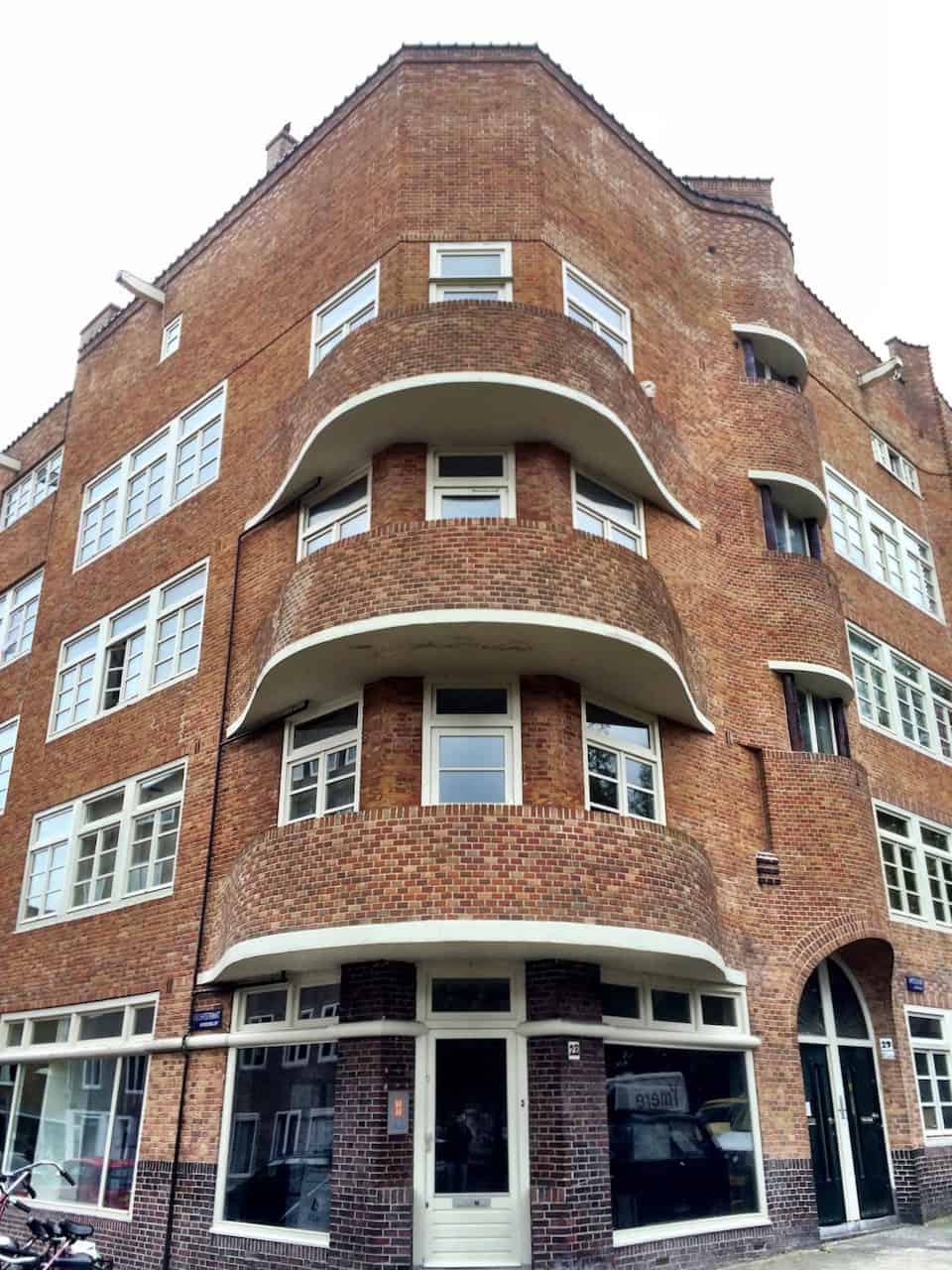
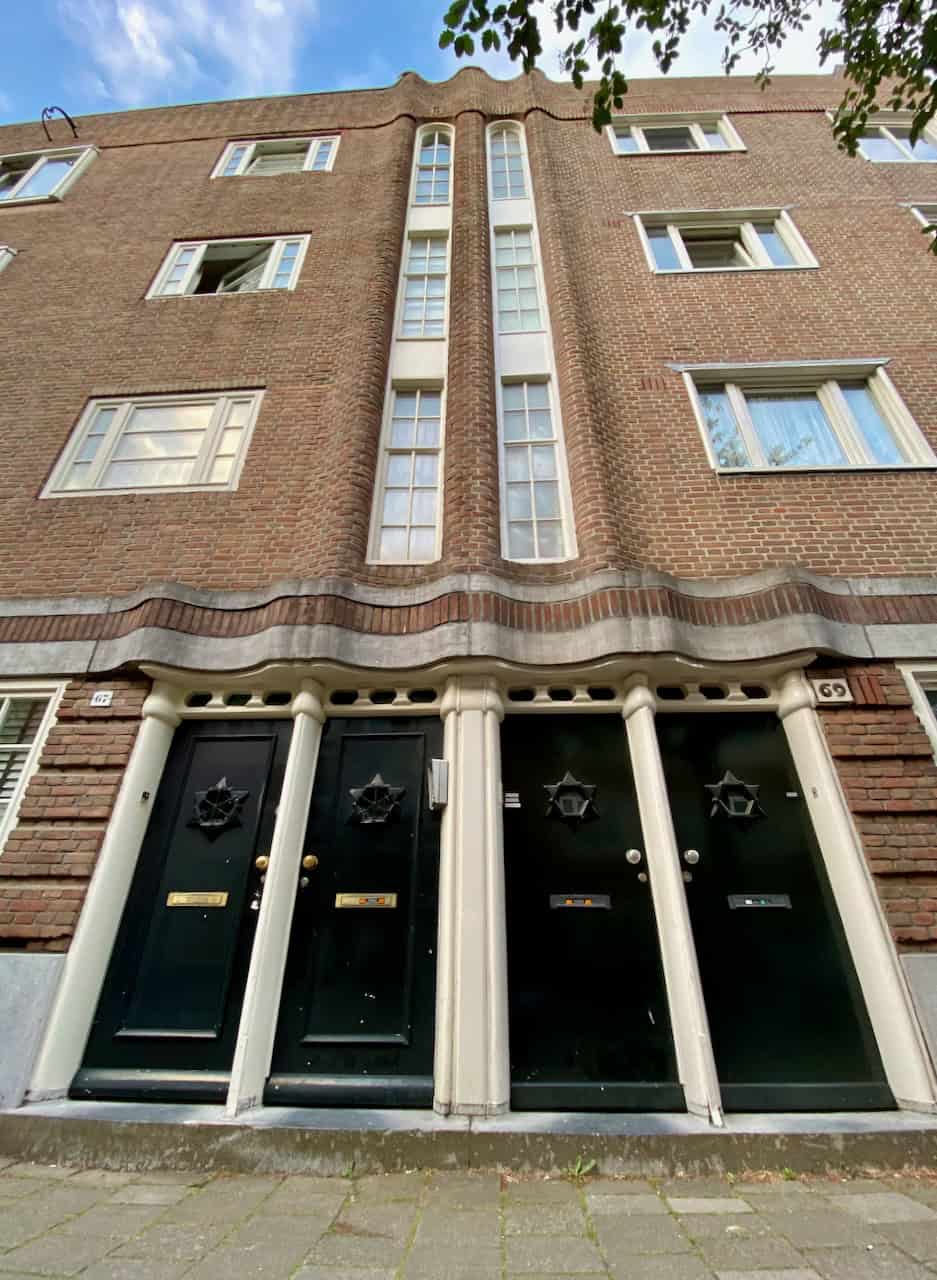
Use of natural materials
Materials like brick, wood, iron and glass are used in ways that highlight their natural qualities. Rooflines are typically curved or steeply pitched, and windows and doors often feature stylised attention to craft and detail.
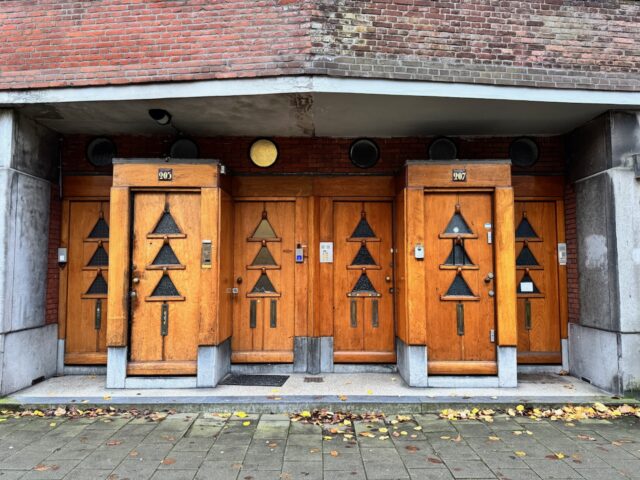
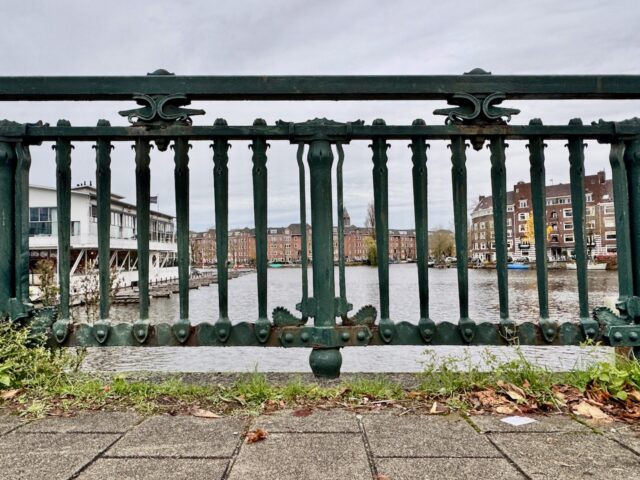
Ornate details and symbols
Amsterdam School buildings and bridges often incorporate symbolic details, like sculptures and reliefs that depict historical or mythical themes. You’ll find them at ground level, above doorways or on the corners of a building. Many of these sculptures were created by Hildo Krop, the ‘City Sculptor’ of Amsterdam. Spotting these sculptures is one of many fun things to do in Amsterdam.

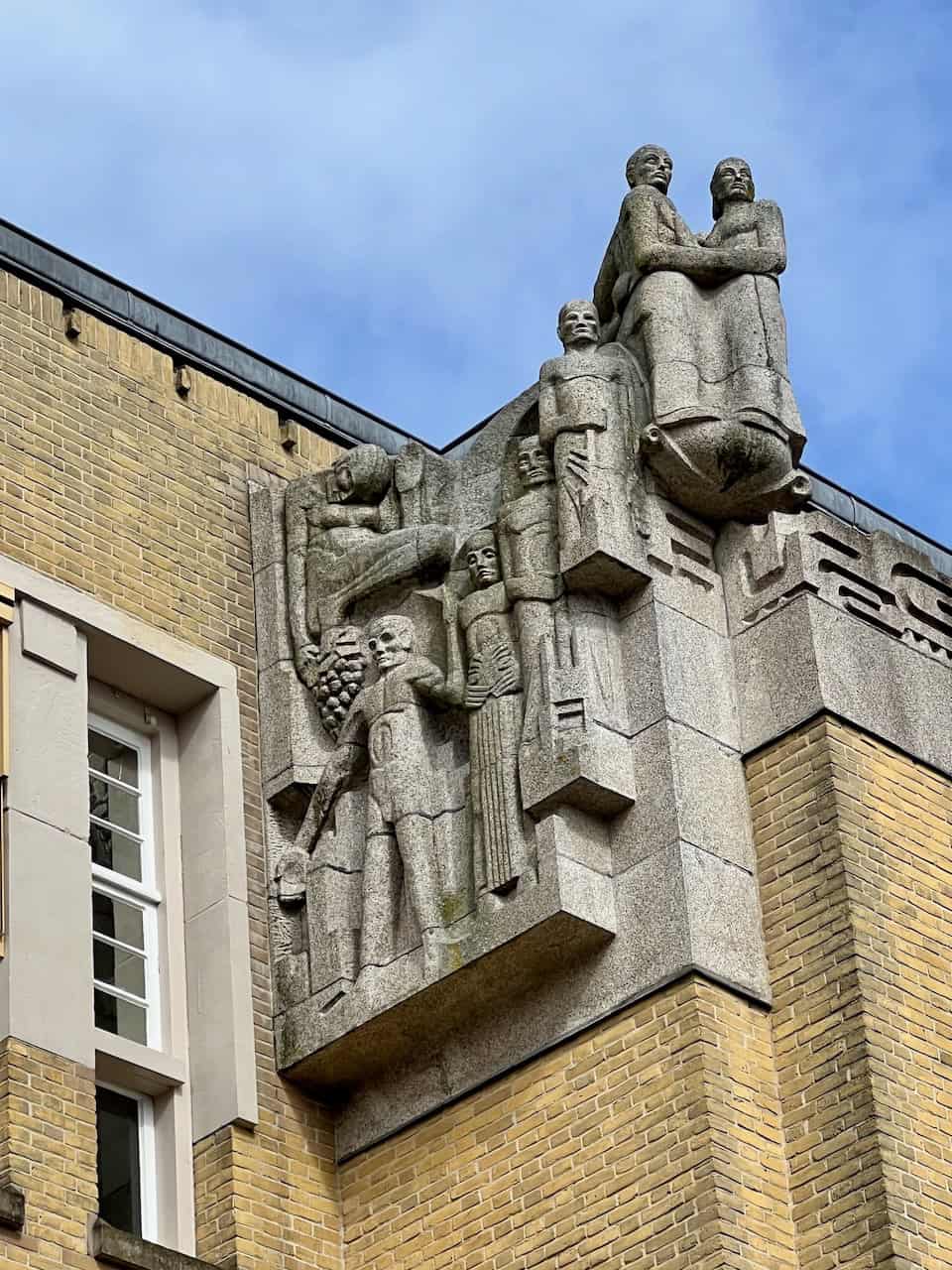

Unique fonts used for names and house numbers are another Amsterdam School style element I love looking out for!
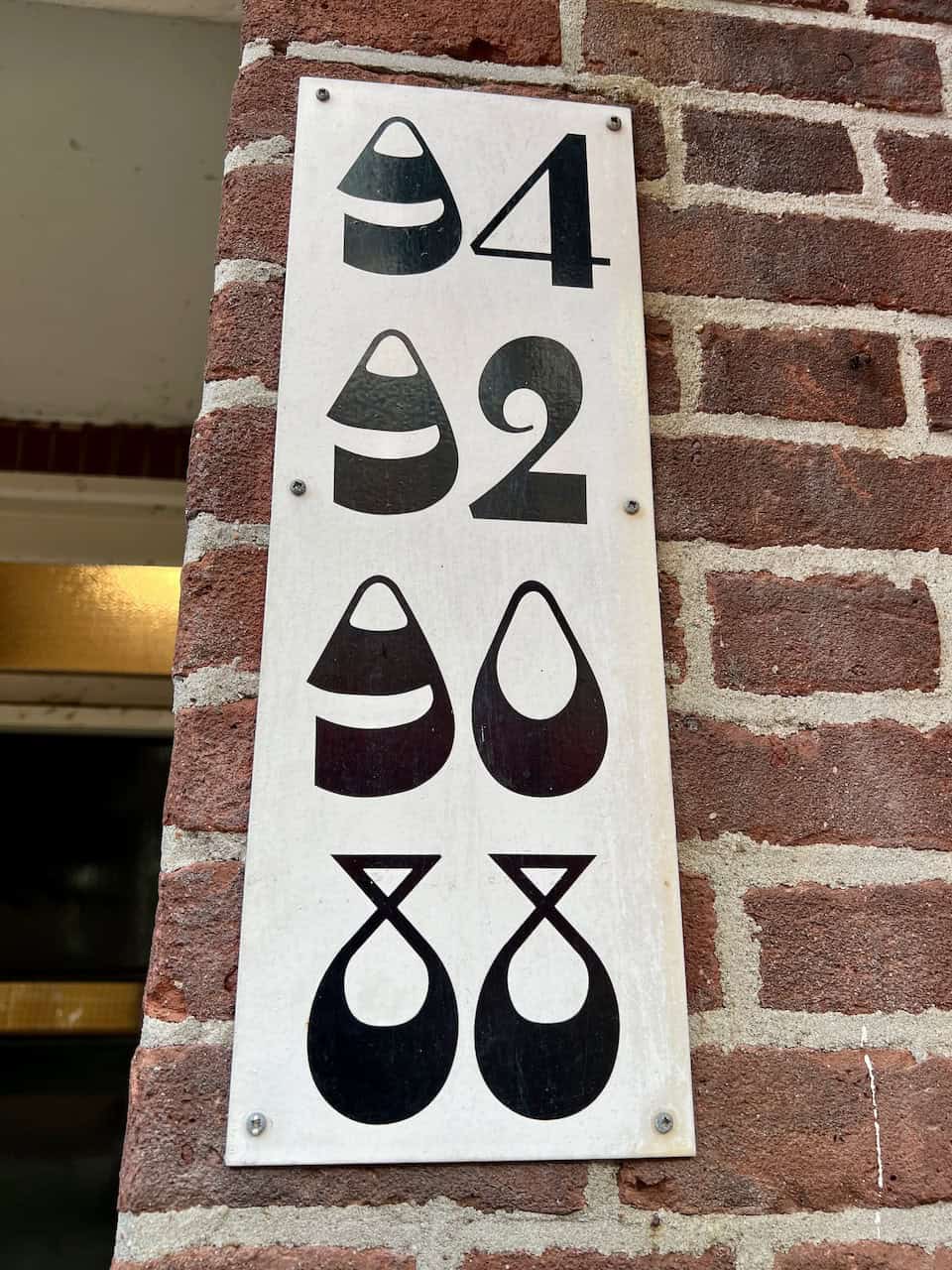
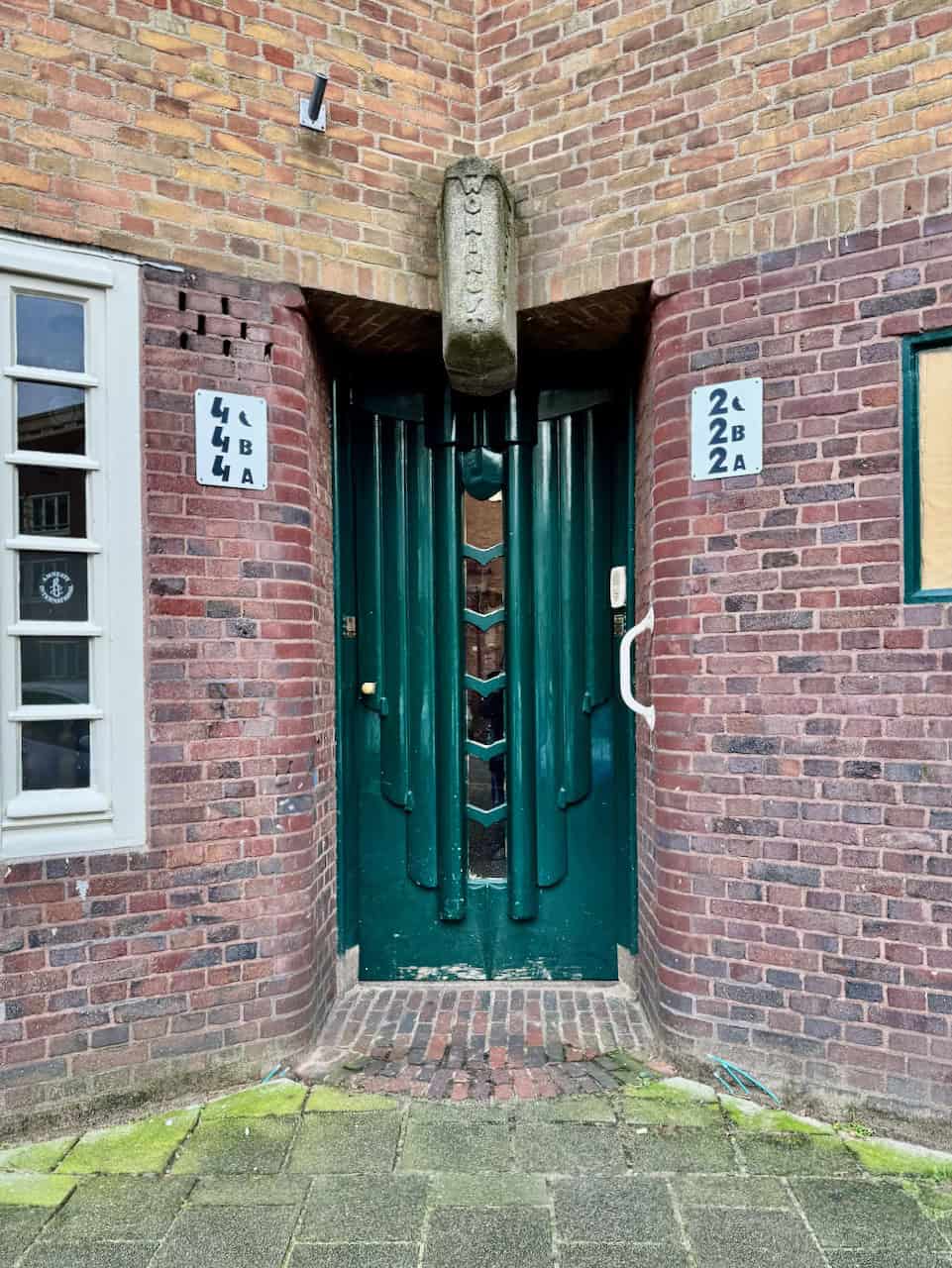
Influential architects of the Amsterdam School
Several architects were pivotal in defining and shaping the Amsterdam School movement. The most notable figures include:
Michel de Klerk (1884-1923)
Often considered the pioneer of the Amsterdam School, de Klerk designed some of the style’s most famous buildings, like the Het Schip complex in the Spaarndammerbuurt. He believed that architecture should be an art form and a social service, creating a sense of pride and beauty for everyday citizens.
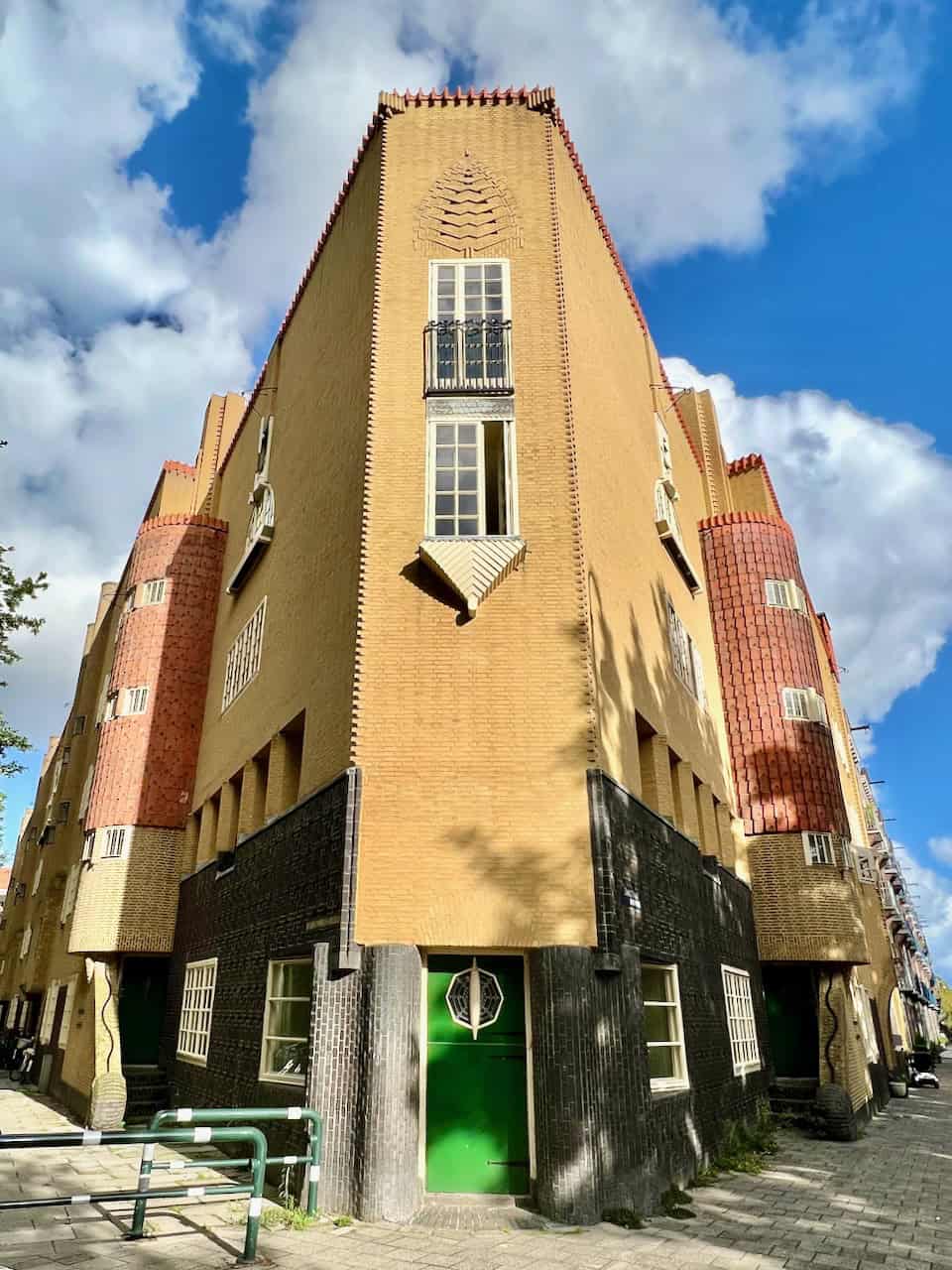
Michel de Klerk also worked extensively with Piet Kramer (see below) to design housing blocks such as De Dageraad.
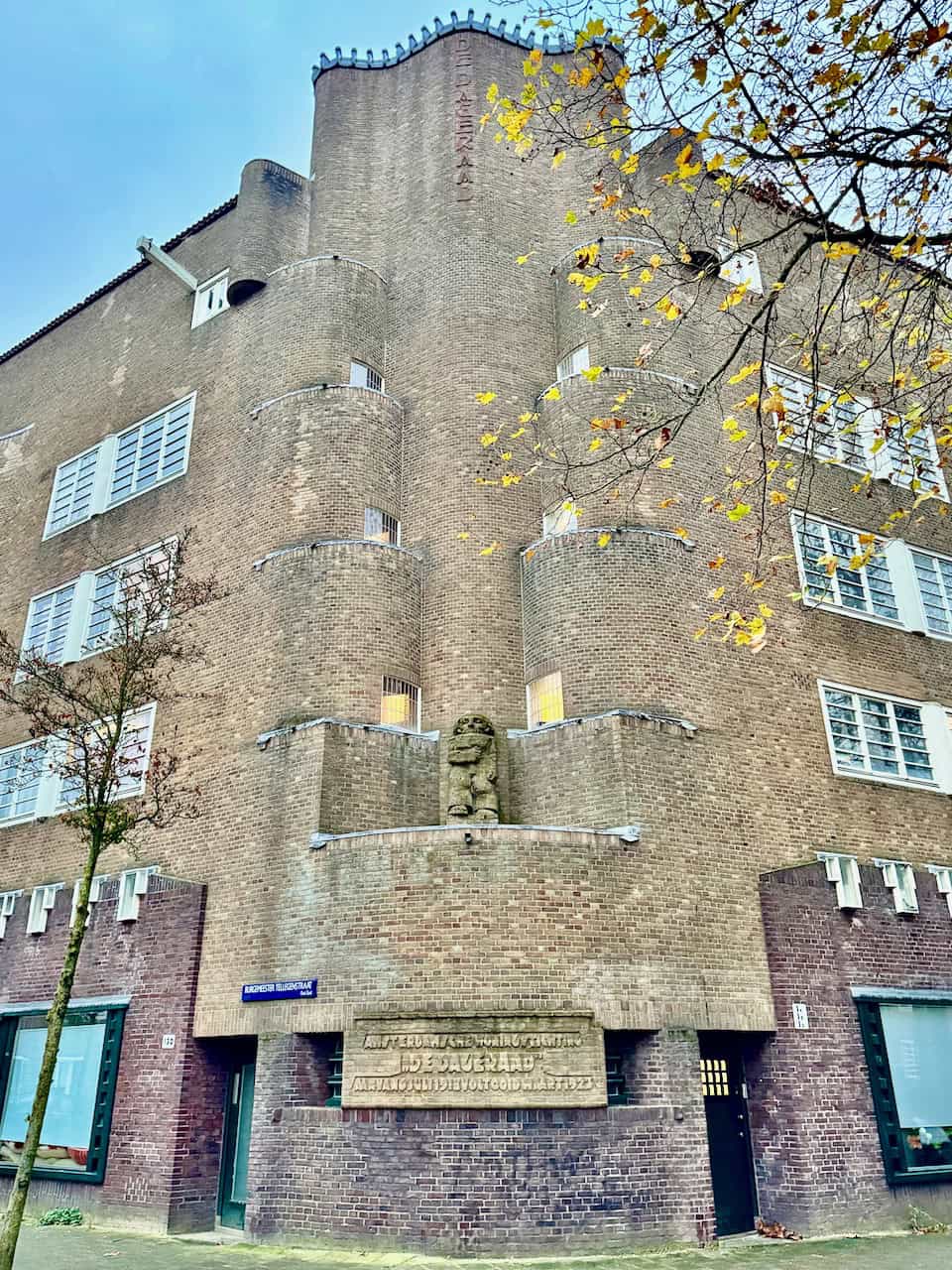
Piet Kramer (1881-1961)
Known for his work with bridges and public buildings, Kramer contributed to Amsterdam School projects, particularly in public works. His designs often feature highly imaginative and expressive forms, including sculptural details and unusual shapes. Kramer designed about 200 bridges in Amsterdam!
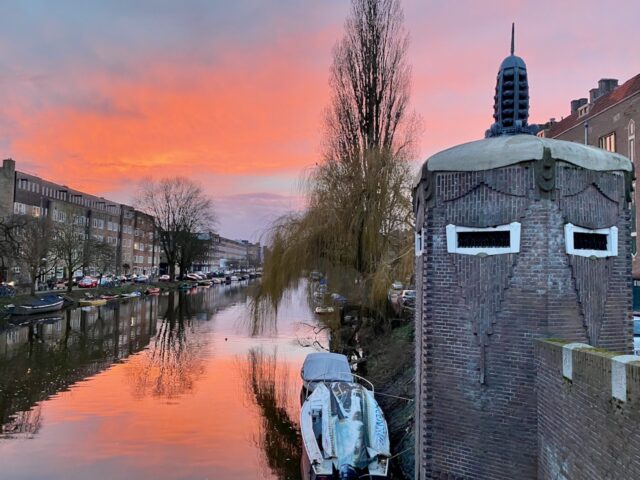
Johan van der Mey (1878-1949)
Often credited with starting the Amsterdam School style, van der Mey’s Scheepvaarthuis (Shipping House) was one of the first major buildings to embody the movement’s ideals. This building was notable for its elaborate ornamentation and decorative sculptures (primarily by Hildo Krop) that celebrated the Dutch maritime industry.
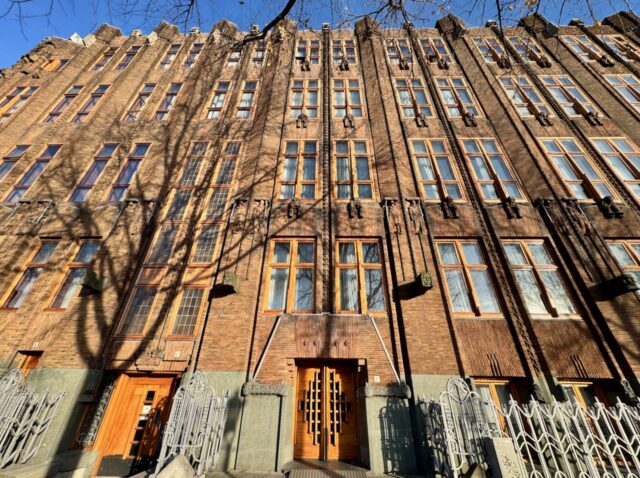
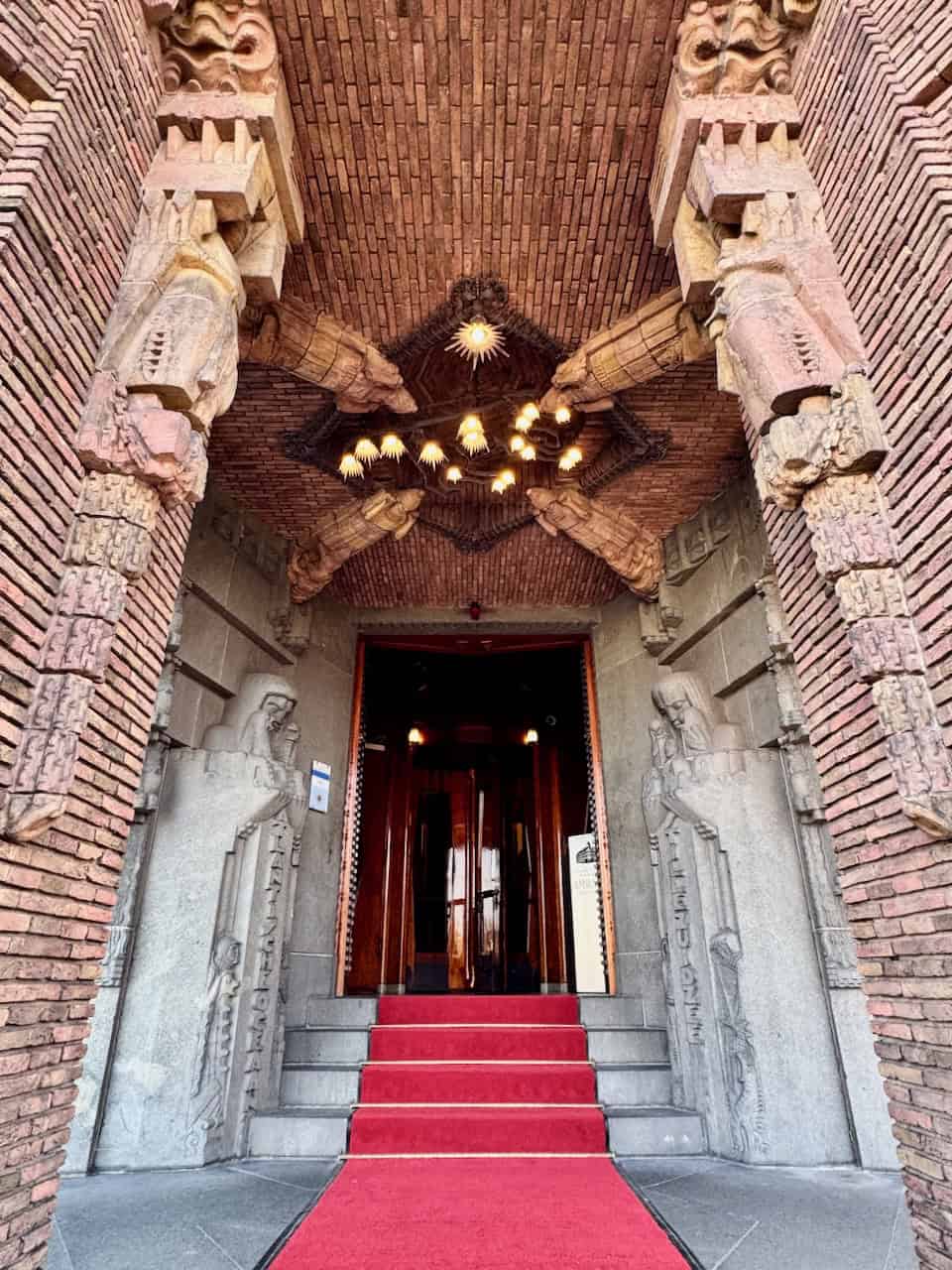
Cornelis Kruyswijk (1884-1935)
Kruyswijk, another proponent of the Amsterdam School movement, was one of the architects recruited to execute Berlage’s Plan Zuid scheme. He designed entire housing blocks in the Rivierenbuurt, as well as 14 schools in Amsterdam.
Hildo Krop (1884-1970)
Though not an architect, Krop collaborated extensively with the architects of the Amsterdam School on creating stone sculptures and ornamental carvings for their buildings. In 1956, Krop was officially appointed as the ‘City Sculptor’ after 40+ years of service. You’ll find his works scattered across Amsterdam, primarily on buildings, bridges and parks.
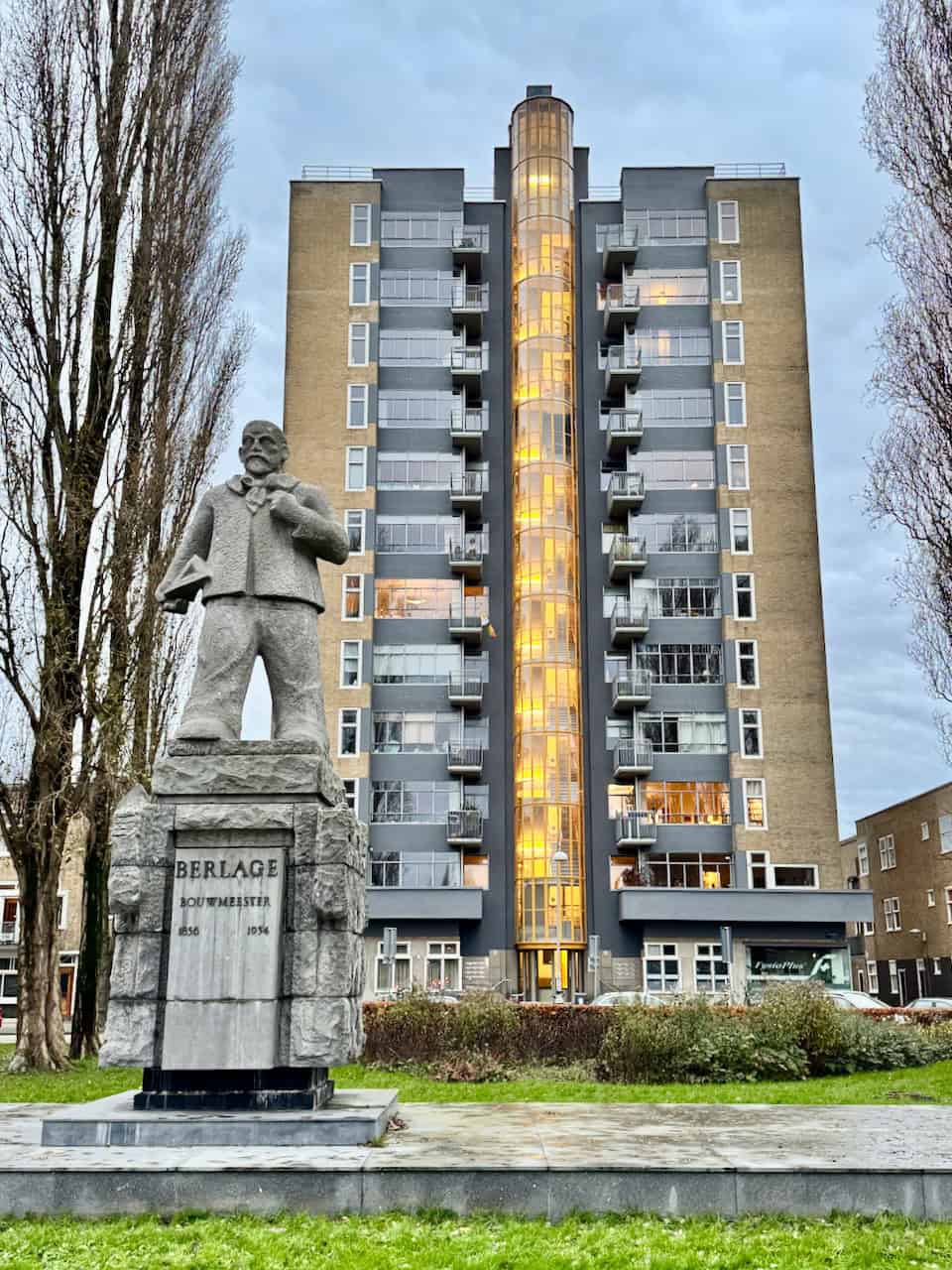
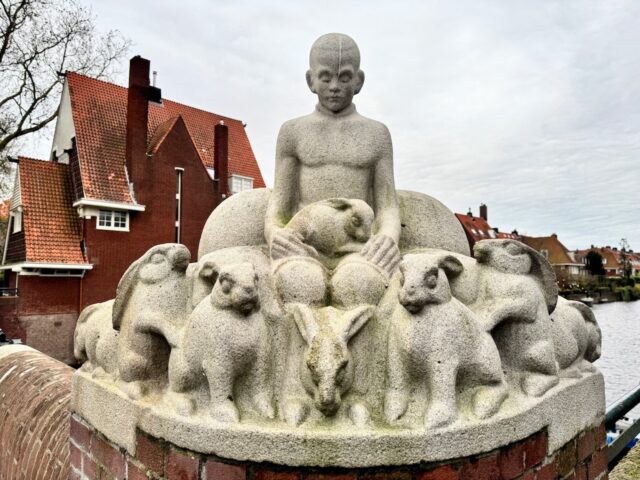
Famous examples of Amsterdam School architecture in Amsterdam
Amsterdam remains the best place to see examples of this architectural style, with several iconic buildings that highlight the distinct aesthetic of the Amsterdam School. See the map below for the locations.
Het Schip (The Ship)
Perhaps the most famous Amsterdam School building, Het Schip was designed by Michel de Klerk in 1919. Located in the Spaarndammerbuurt, it was originally a housing complex built for working-class residents. Its distinctive, ship-like shape (hence the name “The Ship”), elaborate brickwork, and whimsical details make it one of the best examples of Amsterdam School design. Het Schip now houses the Amsterdam School Museum, where visitors can learn more about the style’s history. Purchase tickets for Het Schip here.
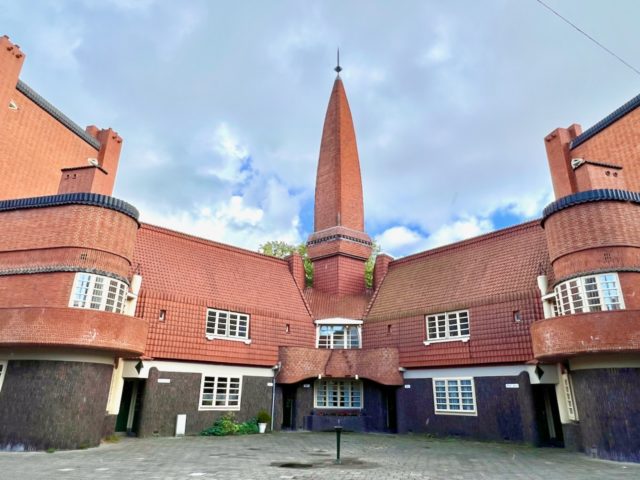
Scheepvaarthuis (Shipping House)
Designed by Johan van der Mey and completed in 1916, the Scheepvaarthuis was a commission from six Dutch shipping companies. The building’s design reflects the pride of the Dutch maritime industry, with its decorative facades featuring nautical motifs and sculptural elements. It’s one of the earliest examples of the Amsterdam School style and is particularly significant for its detailed ornamentation, combining architecture and sculpture in a celebration of Amsterdam’s maritime history. Today, the Scheepvaarthuis serves as the Grand Hotel Amrâth Amsterdam, and visitors can see its intricate details up close.
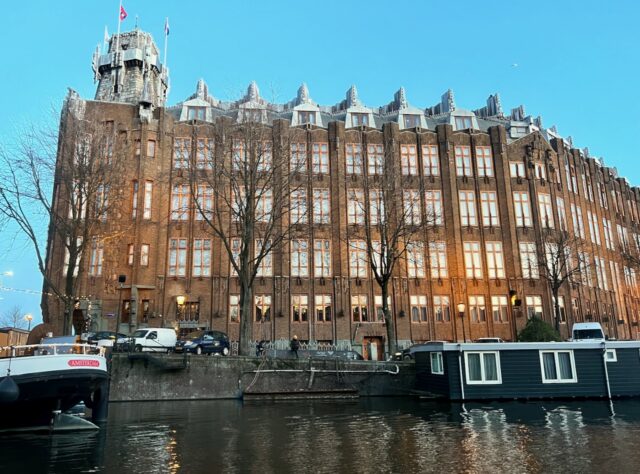
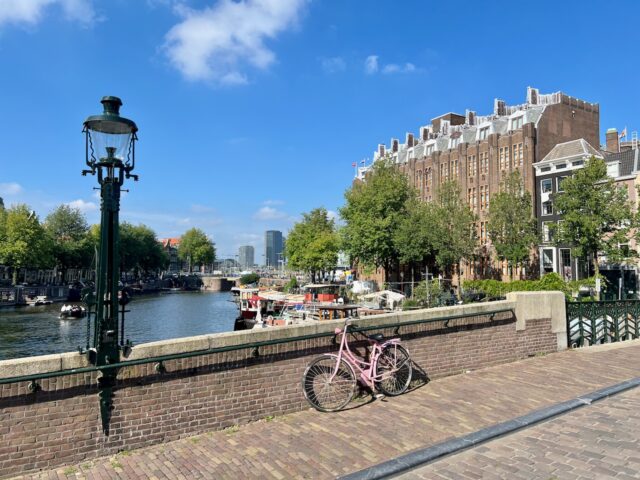
De Dageraad (The Dawn)
Another housing complex designed for working-class residents, De Dageraad was a collaboration between Michel de Klerk and Piet Kramer. Completed in the 1920s in the De Pijp district, the building exemplifies Amsterdam School principles with its rounded forms, ornamental details, and beautiful brickwork. A visitor center is located at De Dageraad where exhibitions and walking/cycling tours are frequently organised. Purchase tickets for De Dageraad here.
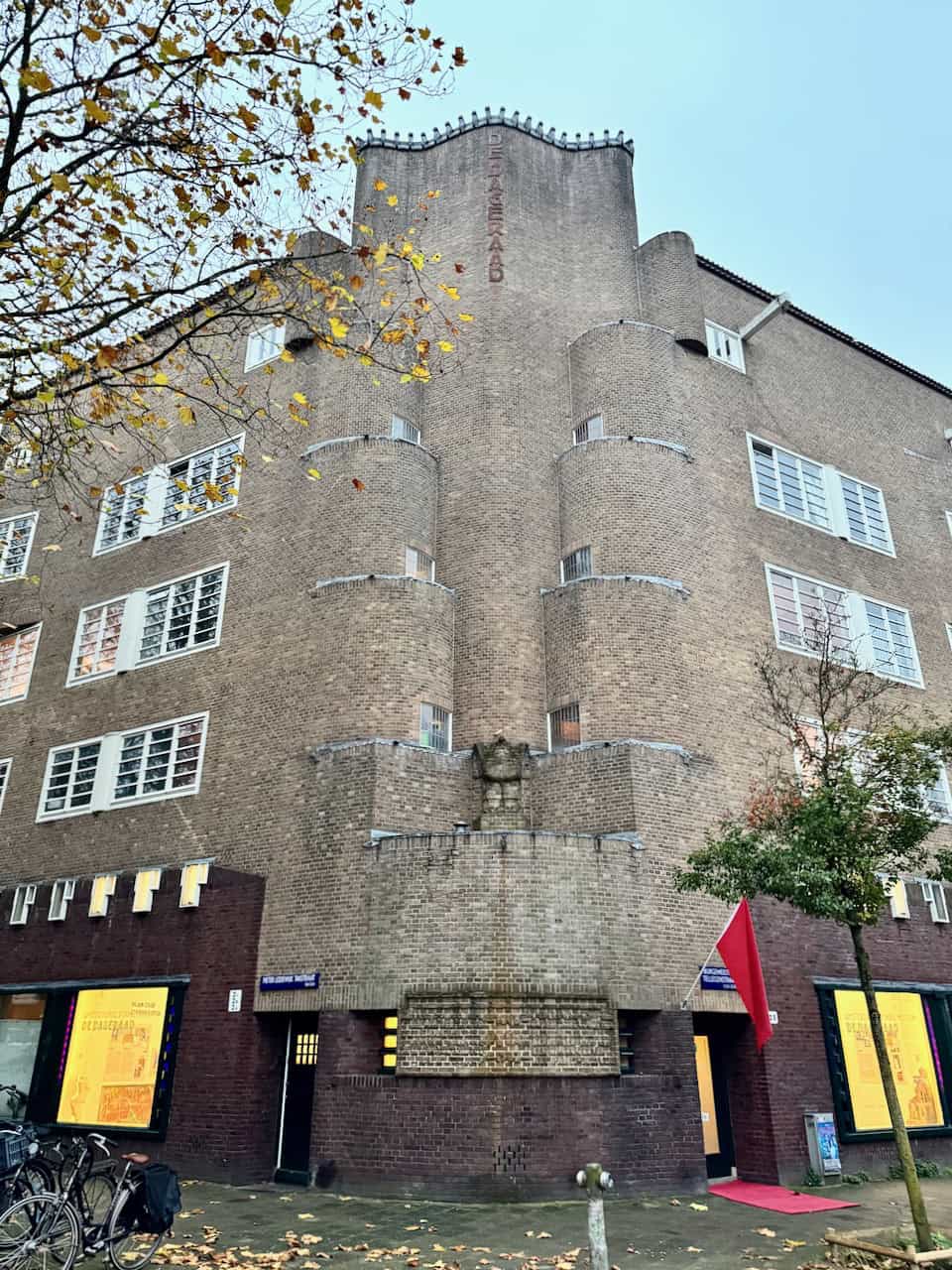
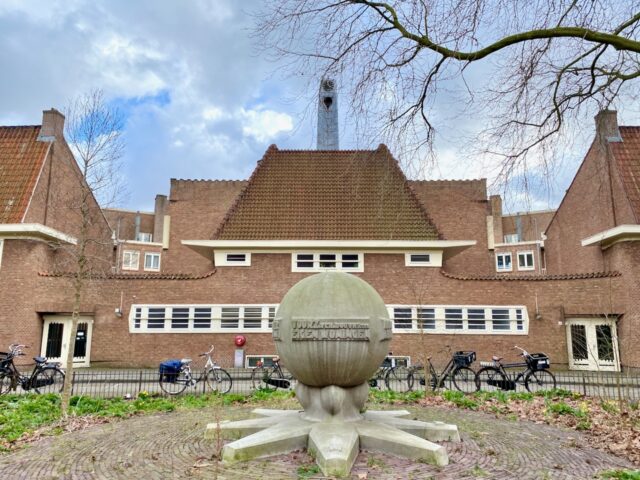
The neighbourhood surrounding De Dageraad is in the Amsterdam School style. I suggest walking around these streets: Burgemeester Tellegenstraat, P.L. Takstraat and Coöperatiehof.
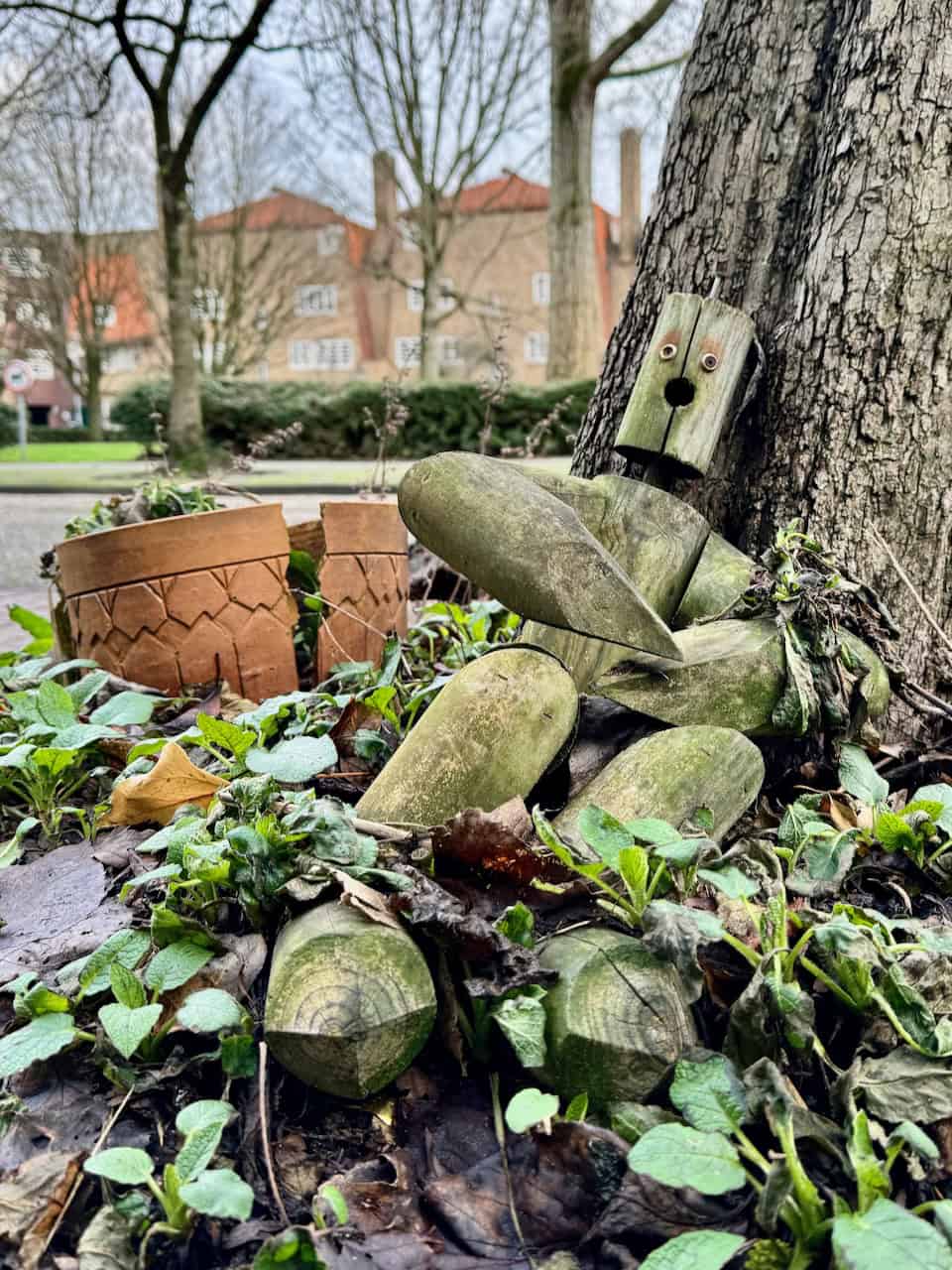
Tuschinski Theater
Completed in 1921, the Tuschinski Theater is a stunning example of eclectic architectural styles from the early-20th century. Leaning heavily on the Amsterdam School, the theater also includes elements of Jugendstil, Art Nouveau and Art Deco. Read more about Tuschinski Theater, named “the most beautiful cinema in the world”.
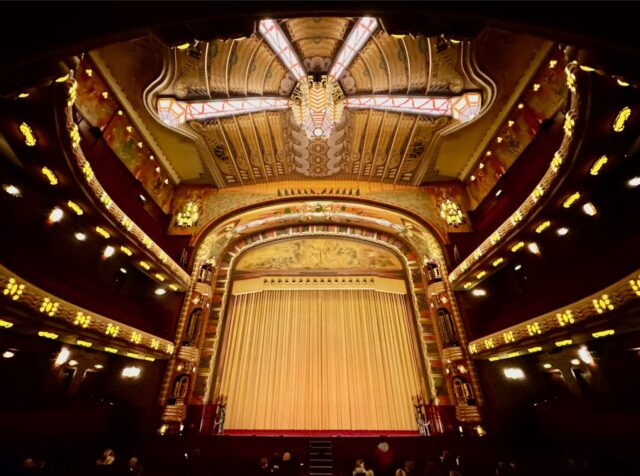
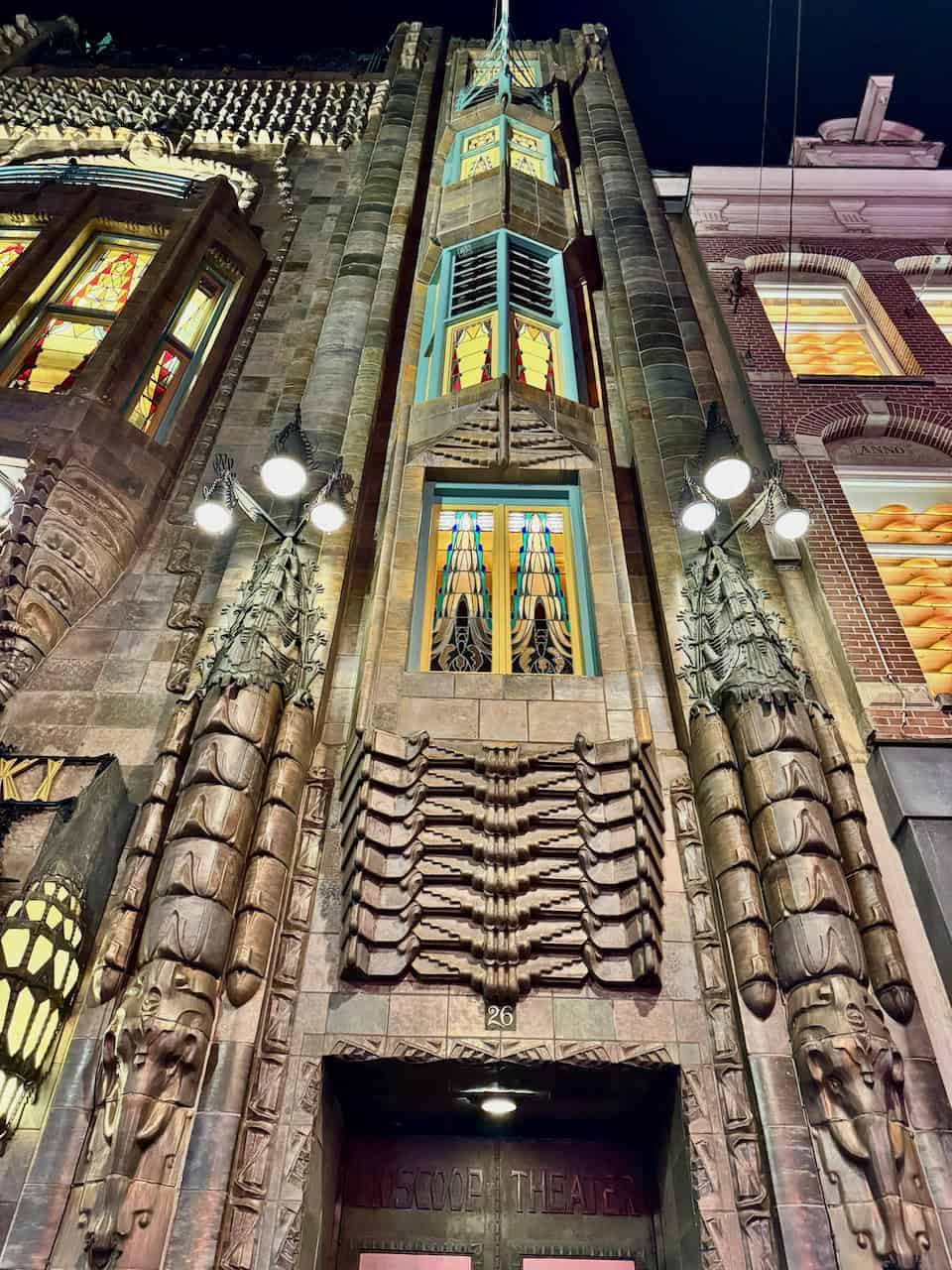
Bridges by Piet Kramer
As Amsterdam expanded, it needed new infrastructure, including bridges. Piet Kramer designed many of the city’s bridges in the Amsterdam School style. His bridges are more than mere utilitarian structures; they incorporate decorative elements, unique shapes, and materials like wrought iron that evoke the style’s aesthetic.
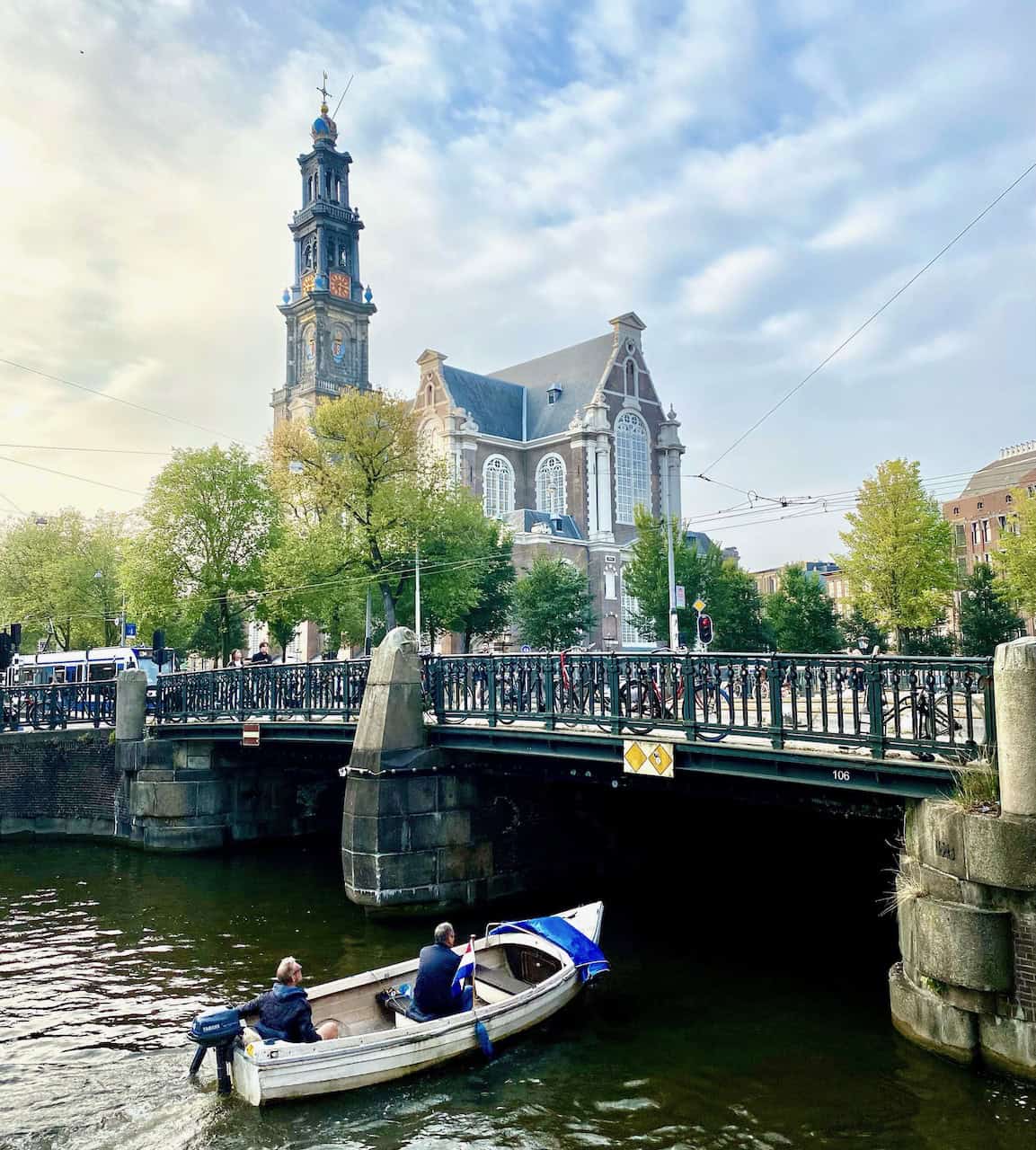
Olympic Stadium
The Olympic Stadium in Amsterdam, built for the 1928 Olympics and designed by Jan Wils, features elements of the Amsterdam School style, including its distinctive use of brickwork and stylised shapes. The stadium’s organic form and decorative touches make it a notable structure in the context of Amsterdam School design.
Muzenplein/Kinderbrug
This little square (Muzenplein) and bridge (Kinderbrug) connect two famous Amsterdam avenues: Churchill-laan and Apollolaan. It’s home to a concentration of sculptures by Hildo Krop and other artists.
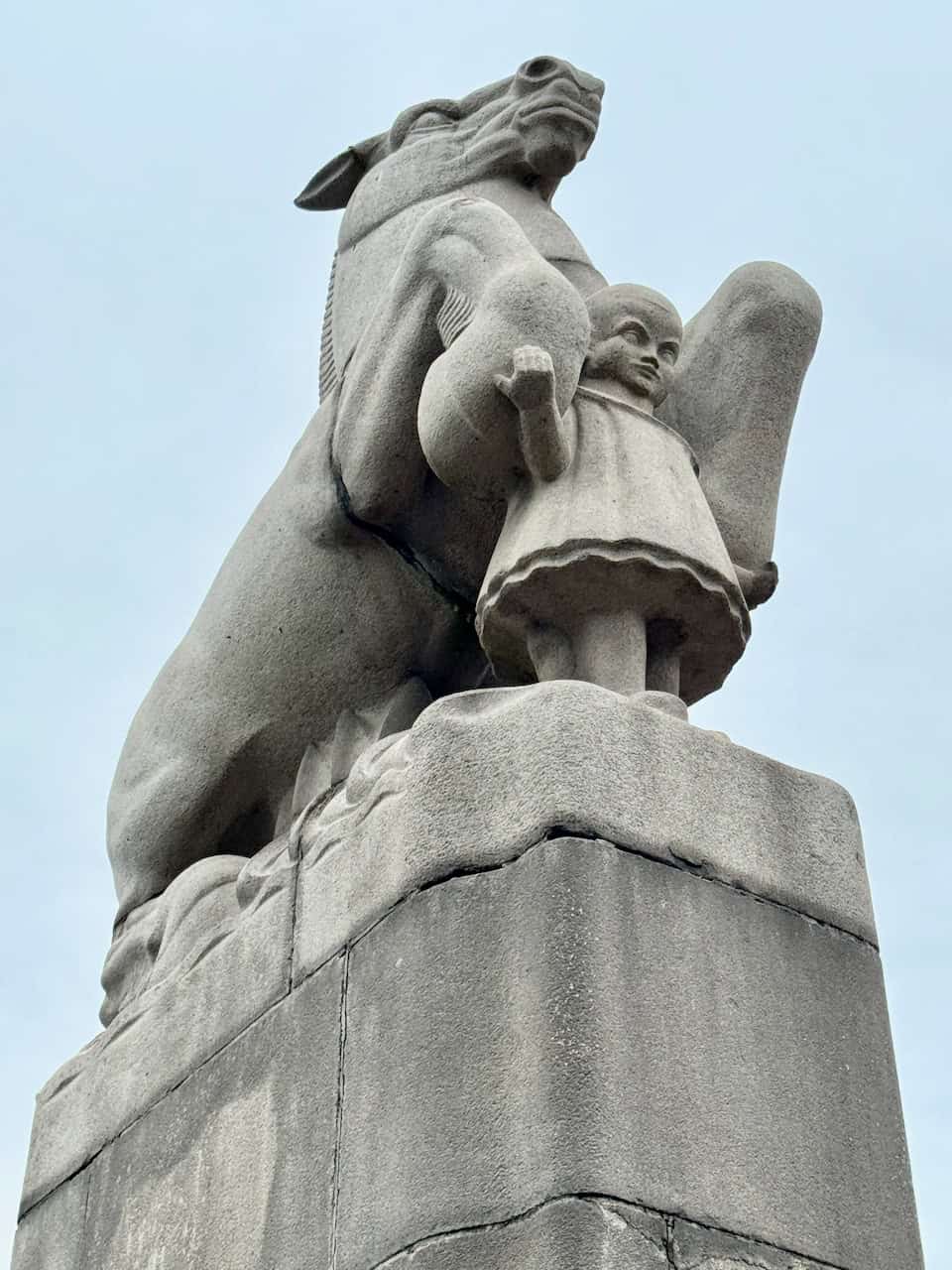
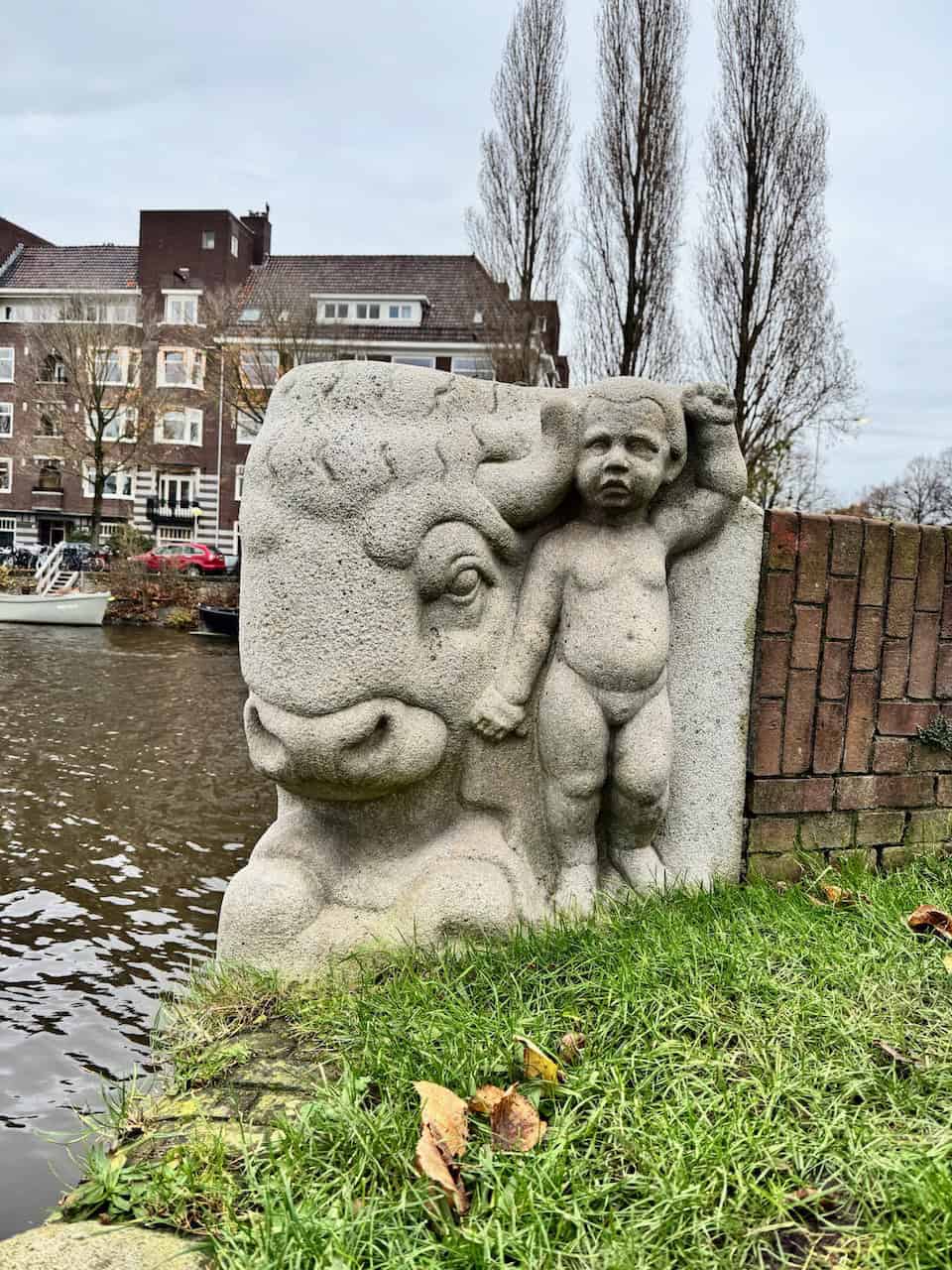
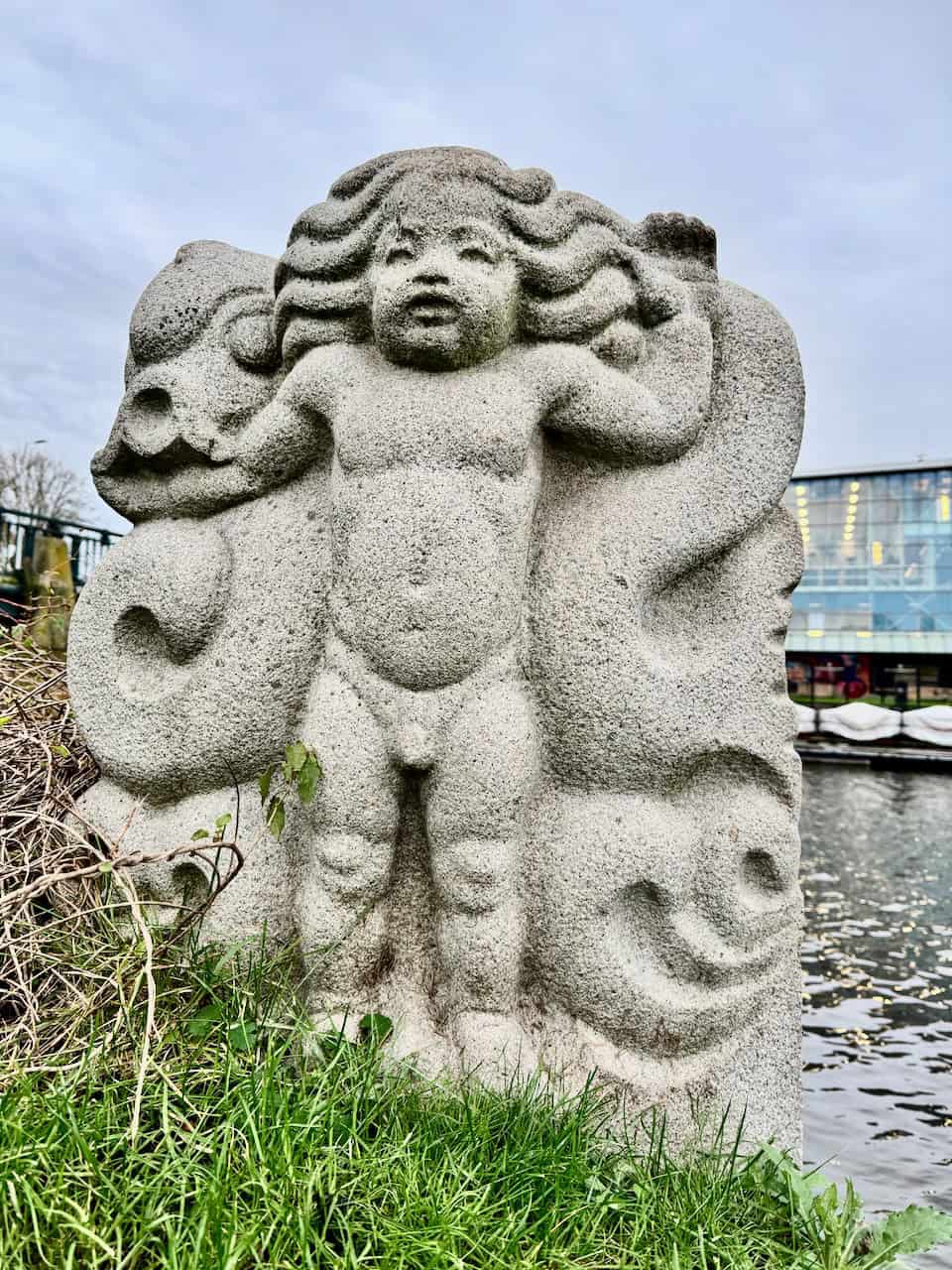
Amsterdam School walking route in Amsterdam Zuid (South)
You’ll find Amsterdam School architecture throughout the city, with concentrations in the Amsterdam Zuid district and the Spaarndammerbuurt. Here’s an easy Amsterdam School architecture walking tour from the Amstel Station to Apollolaan, which you can do in a few hours. It passes numerous Amsterdam School architectural highlights such as the Piet Kramer bridge, housing districts along the Amstelkanaal (Jozef Israelskade), Victorieplein, De Dageraad and ends at Muzenplein.
The Amsterdam School is one of the most distinctive architectural movements to emerge from The Netherlands. If you’re a fan of architecture, exploring Amsterdam through its Amsterdam School buildings offers a fascinating journey into an artistic movement that combines functionality with creativity and social responsibility.
Read about the Bauhaus movement, another Modernist style that emerged in Germany at roughly the same time as the Amsterdam School.

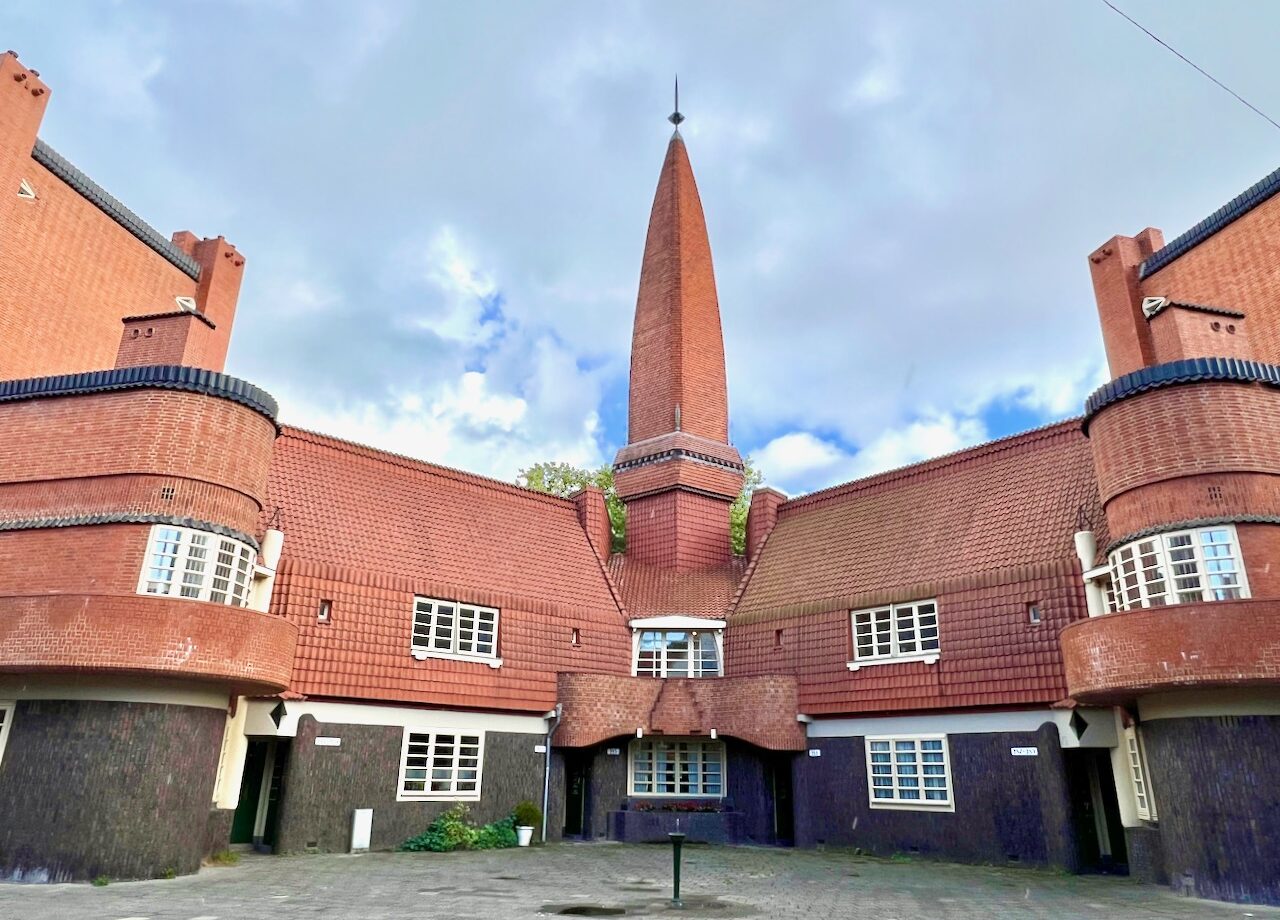

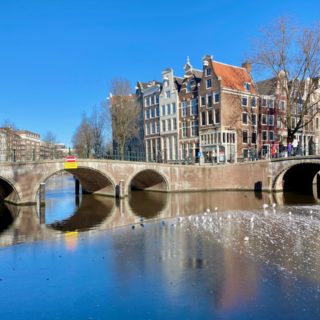
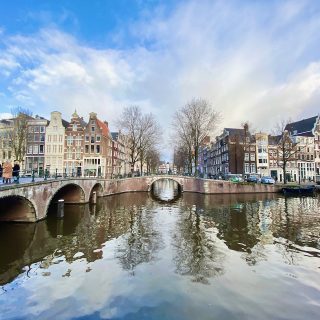
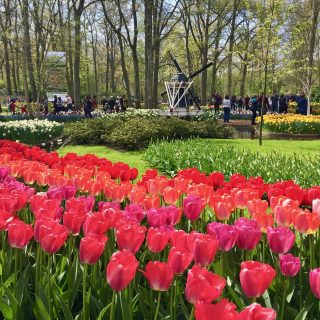







I think it’s the early-20th century combination of functionality and many artistic elements incorporated into the design.
What makes Amsterdam School architecture unique compared to other styles?
This article is a great introduction to Amsterdam School architecture. It provides a clear overview of the style and its history, as well as some great examples of where to see it in the city. I found the suggested walking route to be particularly helpful.
Hi Rob,
You’re most welcome! I’m so glad you enjoyed it! 🙂
I love this article Keith! Its very informative but also fun to read and cute. I learned a lot from it about my own neighbourhood, thank you!